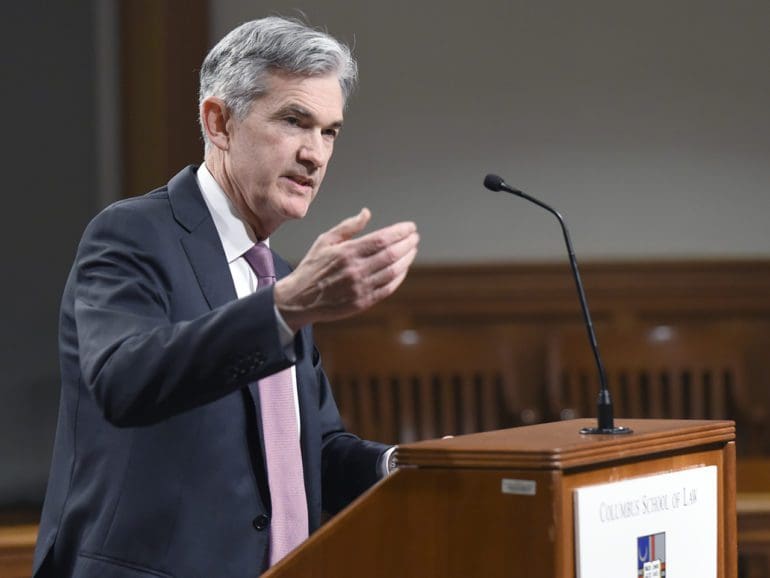Wednesday, Federal Reserve chair Jerome Powell announced the Fed would introduce the largest increase in interest rates since 2000: half a percent, intended to combat post-pandemic inflation.
“I think the most important thing for everyone is to return to price stability to focus on sustained labor market conditions,” Powell said, ending what economists are describing as the most aggressive monetary policy meeting in decades.
The Fed also said it would cut the fat from its $9-trillion asset portfolio next month, a stance to combat an 8.5% inflation rate and a rocky labor market feeling the effects of the Great Resignation.
How U.S. consumers are feeling
Gasoline, utilities, and energy prices are rising from a perfect storm of a supply crunch, wartime price increases, price reaction to reopening economies, and overall demand explosion.
In New York City, apartment prices are $1,000 above pre-pandemic market prices and gaining speed as inflation and migration conspire to cripple the savings of even the most fiscally minded resident.

In the largest inflationary event since the 1980s, nonprime consumers are the canaries in the coal mine of waning USD buying power. Non-Prime consumers see the most significant hit to their wallets when prices rise. TransUnion recorded the trend in a new study, showing increasing credit balances and delinquency rates of loans beginning in early 2021.
Charlie Wise, SVP of research and consulting at TransUnion, said that prolonged inflation would hurt, but delinquency rates will not rise above levels seen before the pandemic. If TransUnion’s models of inflation prediction are correct and inflation levels will lower, Wise said consumer credit markets would recover healthily.
“Inflation is expected to remain high through at least 2022. Its impact on consumer wallets is clear — balances are rising, and we see an uptick in delinquency rates,” Wise said.
“One of the key conclusions from the study is that while a prolonged, elevated inflation environment will negatively impact many consumers, serious delinquency rates will generally not rise above levels seen before the pandemic, even under worst-case inflation scenarios.”
Inflation increased, so have delinquency rates
| Borrower Types/Timeframe | Q1 2020 | Q1 2021 | Q1 2022 |
| Annual Inflation Rate | 1.5% | 4.8% | 8.5% |
| Revolving 90+ DPD | 2.6% | 1.6% | 2.0% |
| Non-Revolving 60+ DPD | 3.6% | 2.2% | 2.3% |
Higher prices for goods and services, like daily household groceries and larger purchases like cars, have increased new loan amounts. More significant loan amounts mean higher consumer balances on average, but not as dramatically higher as expected: sharp and sudden inflation does not translate to sudden consumer debt spikes, the study shows.
TransUnion calls this an indication of consumer resiliency.
Still, as debt obligations increase from pandemic-era lows, the study also determined that serious delinquency rates have risen for revolving and non-revolving debt in the last year. The rise in delinquencies has occurred as inflation hit a nearly 40-year high at the beginning of 2022.
Average Non-Mortgage Balance per Consumer Increased Again After Pandemic Drop
| Borrower Types/Timeframe | Q1 2020 | Q1 2021 | Q1 2022 |
| Non-Prime* | $22,970 | $22,461 | $22,988 |
| Prime and Above** | $18,831 | $18,997 | $19,482 |
The study found that lending has recovered to more “normal” conditions following the pandemic slowdown, increasing average loan amounts.
Inflation time frame
Consumers also are experiencing an increased debt service burden each month for non-revolving (auto and personal loans) and revolving (credit cards) accounts. TU found that the average monthly minimum payment due on revolving accounts for non-prime consumers has increased to $194 in the first quarter of 2022, up from $182 in Q1 2021. Meanwhile, non-revolving monthly payment due amounts rose to $557 from $513 over the year.
Prime and above consumers have only seen a marginal increase in payments due, up to $143 in Q1 2022 from $137 a year previous. The real change in premium and above payments was in non-revolving monthly obligations, up to $954 from $905.
Despite the rise in debt obligations, the study found that more consumers were making excess payments in Q1 2022 than pre-pandemic; particularly, subprime borrowers began paying down more than just the minimum. Margaret Poe, head of consumer credit education at TransUnion, said making on-time payments and keeping utilization rates low were ways to increase overall credit health.
“While challenges abound for consumers in the current inflationary environment, it is heartening to see borrowers, especially those in the riskiest credit categories, make an effort to pay down more of their monthly payment obligations,” Poe said.
“Building a foundation of sound financial and credit habits and practicing them consistently are the keys to long-term credit health.”
Default rates on the rise
Elevated inflation has increased the early default rate of recent credit card originations. For instance, 8.53% of subprime borrowers with a VantageScore 4.0 score between 580-600 who opened a credit card in October 2021 became 30-plus days past due on their account three months after origination. In October 2019 originations, the same category only saw a default rate of 6.92%.
“It is not surprising to see a rise in credit card delinquencies, especially when considering many younger consumers have not experienced either high inflation or rising interest rates in their adult lives,” Wise said. “At the same time, it is important to keep in mind that, even with these recent increases, overall delinquency levels for most products remain below pre-pandemic levels,” added Wise.”
Inflation forecast
TransUnion said it had developed a forecast model to observe the impact of inflation scenarios over the next year through Q1 2023, based on forecasts provided by Oxford Economics. The team constructed scenarios in high, baseline, and low inflation rates. In all scenarios, the inflation rate would decline from 8.5% to a lower level next year, at 5.68% in the worst case, 3.58% at baseline, and a low of 1.48%.
They expect the high inflation model for credit cards shows that non-prime borrower consumer delinquency rates for credit cards would rise to 8.38% in Q1 2023, up only about .38%.
While that delinquency rate was above lows in 2021, it is still significantly lower than the pre-pandemic Q1 2020 rate of 9.24% during government stimulus.
Related:
“As with many forms of payment shock, a segment of consumers will be more vulnerable to rising costs of living and the resulting strains on the consumer wallet. However, not all consumers — even in high-risk tiers — are vulnerable,” Wise said.
“Credit scores remain very effective at rank-ordering risk, but our study also highlights the need to leverage trended data and other sources of information that help identify consumers whose payment behavior indicates greater resilience and capacity to absorb rising living costs.”


